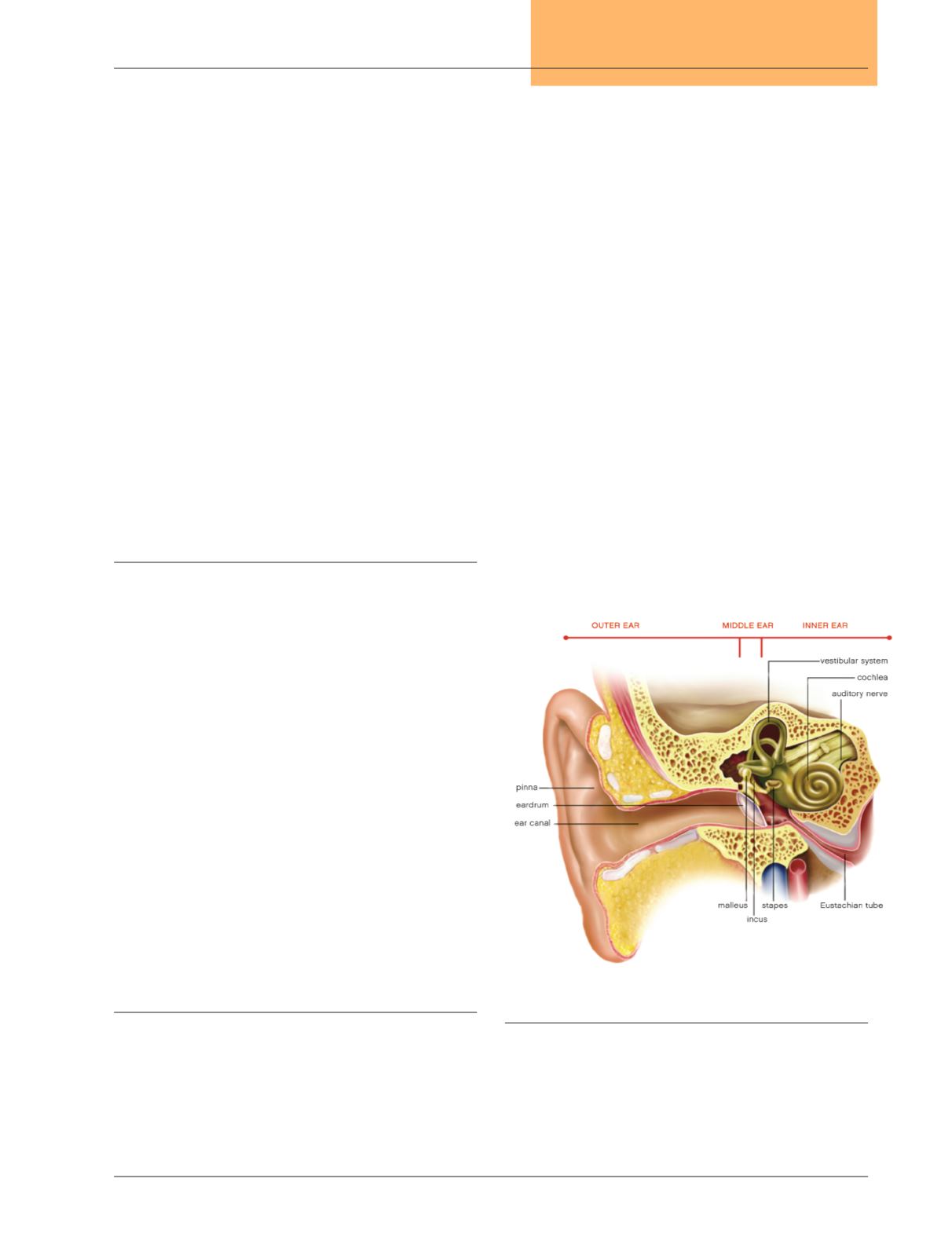
Northeast Florida Medicine
Vol. 66, No. 1 2015
53
Otolaryngology
Hearing Restoration: Miracles Now and for the Future
Introduction
Hearing loss represents a very common affliction in the
United States (US) and abroad. Approximately 40 million
Americans suffer from hearing loss representing greater than
10percent of the United States population.
1
The incidence
of hearing loss is significantly greater in the senior adult
population with 30 percent of patients older than the age
of 65 suffering from a significant hearing loss. In the US,
approximately 1.4 million children younger than 18 years of
age are currently suffering fromvaryingdegrees of hearing loss.
Hearing screenings of newborns result in approximately three
in 1,000 infants being identified with a severe to profound
hearing loss in the US. It is estimated that the prevalence of
disabling hearing loss in some regions of the developing world
is approximately twice the incidence in US.
2
Hearing loss results in significant isolation for the affect-
ed patient with increased stress and aggravation. Recent
studies have shown an association between hearing loss
and dementia; potentially in part related to isolation and
reduced stimulation of the auditory cortex.
3
Other studies
have shown that decreased job performance for patients with
hearing loss results in a significant decreased earning potential.
Unfortunately, a significant number of adults are not treated
for their hearing loss, due to lack of identification and due
to financial constraints. Only one in five adults in the US
needing hearing aids actually obtains them to help with their
problem.
1
Unfortunately, only 13 percent of primary care
physicians inUS currently routinely screen their patients for
hearing loss.
1
Simple screening tools are available such as an
otoscope, which produces a tone to screen for hearing loss,
and can be purchased fairly inexpensively.More sophisticated
tests such as otoacoustic emissions and auditory brainstem
response testing are also available. Additionally, basic testing
with tuning forks can help to differentiate among the various
forms of hearing loss.
Anatomy
The ear can be divided into an outer, middle and inner
portions. (Figure 1) The outer ear consists of the pinna and
ear canal, and serves to funnel sound into the ear canal and
down to the tympanic membrane. The ear canal is one-third
cartilage and two-thirds bone. The middle ear starts with
the tympanic membrane and is typically filled with air. The
By J. Douglas Green, Jr., MD, FACS
Abstract:
Hearing loss affects all of us in some way, shape or form,
either personally or through a family member or friend. Hearing loss
may occur as a result of a problem in the outer, middle or inner ear,
or even from the central nervous system with resulting impairment
in communication. Frequently, hearing loss is multifactorial with
environmental factors superimposed on a genetically disturbed
cochlea. Better understanding of the effects of isolation and
development associated with hearing loss have highlighted the
importance of proper identification and treatment. Improvements in
amplification, cochlear implantation and diagnostics have allowed
earlier identification and better treatment options for our patients.
Future improvements in the use of molecular, genetic and stem-
cell therapies are on the horizon and give additional hope to those
afflicted with hearing loss.
Address Correspondence to:
J. Douglas Green, Jr, MD, FACS
Jacksonville Hearing and Balance Institute
10475 Centurion Parkway North, Suite #303
Jacksonville, FL 32256
(904) 399-0350, Fax: (904) 399-5914
E-mail:
Figure 1.
Illustration showing the outer, middle and inner
ear. (Used with permission of MED-EL)


